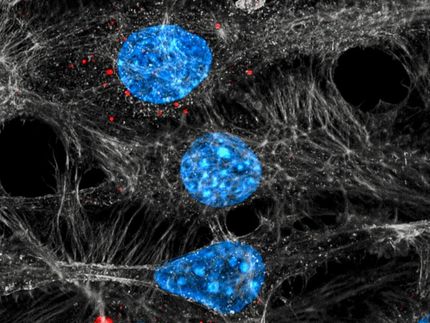Nebivolol prevents anthracycline-induced cardiotoxicity
Advertisement
Nebivolol prevents anthracycline-induced cardiotoxicity, according to research presented at ESC Congress 2016 by Professor Mirela Cleopatra Tomescu, a cardiologist at Victor Babes University of Medicine and Pharmacy, Timisoara, Romania.1
"Breast cancer is a major public health problem worldwide, with a death rate of about 1 in 33 patients," said Professor Tomescu. "Anthracyclines are a class of powerful pharmacological agents widely used in the treatment of breast cancer but they have a toxic effect on the heart, inducing heart failure."
The goal of the current study was to find a method that detects cardiotoxicity accurately and early, and to see if a cardioprotective drug could prevent heart failure in these patients.
Depressed myocardial contractility is traditionally diagnosed using echocardiography, based on the estimation of left ventricular ejection fraction (LVEF) and fraction shortening (FS). However, these parameters are affected in the advanced stages of cardiotoxicity. New echocardiographic techniques, such as tissue Doppler, speckle tracking and strain rate imaging, allow the recognition of myocardial dysfunction before heart failure symptoms occur, and before the classical echocardiographic parameters are impaired.
For the cardioprotective drug, the researchers chose nebivolol, a cardioselective beta blocker with anti-oxidant, anti-apoptotic and vasodilator properties which is used to treat hypertension and heart failure.
The study group included 60 women with HER-2 negative breast cancer, with a mean age of 52 ± 13 years, scheduled to start chemotherapy with doxorubicin. They were randomly divided into two groups, the control group (n=30) and the nebivolol-treatment group (n=30). Nebivolol was administered at a dose of 5 mg once daily, for the duration of chemotherapy. Cytostatic treatment was performed with doxorubicin 70 mg/m2, administered intravenously alone, every 21 days. There were six cycles of cytotoxic therapy. The average cumulative dose of doxorubicin was 520 ± 8 mg/m2.
Echocardiography was performed at baseline and after six months of chemotherapy and included conventional two-dimensional echocardiography, tissue Doppler imaging, and speckle tracking imaging. There were no significant differences between groups in baseline clinical and echocardiographic characteristics. The cumulative dose of doxorubicin was similar in the two groups. No patient stopped chemotherapy, and no patient died during the study.
After six cycles of chemotherapy with doxorubicin, LVEF, FS, and left ventricular (LV) diameters did not change significantly in either group. In the control group, tissue Doppler imaging revealed significant alterations of LV diastolic function, assessed by a decrease of myocardial velocities. Speckle-tracking imaging assessed in the control group showed a statistically significant alteration of the LV systolic function, of longitudinal and radial strains, as well as of the strain rates. In the nebivolol treatment group, no significant changes in heart function were noted.
Professor Tomescu said: "Conventional echocardiography showed no change in heart function in either group following chemotherapy. But the newer, more sensitive echocardiographic techniques showed heart damage after chemotherapy. Patients who received nebivolol were protected and had normal heart function. Our study demonstrates the utility of new echocardiographic methods such as tissue Doppler and speckle tracking imaging in the early detection of ventricular dysfunction induced by cytostatic treatment."
She concluded: "Our finding that nebivolol treatment prevented anthracycline-induced cardiotoxicity is encouraging, but larger studies with a longer follow-up period are needed to confirm the results."

















































